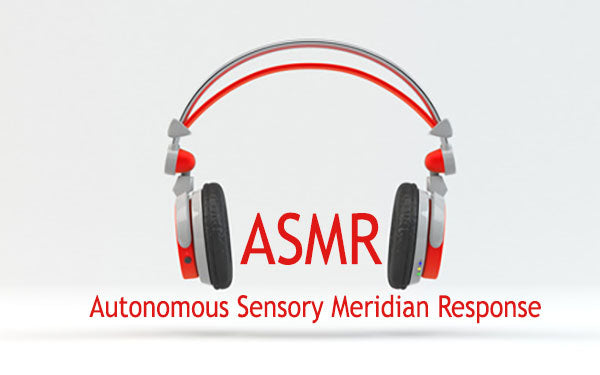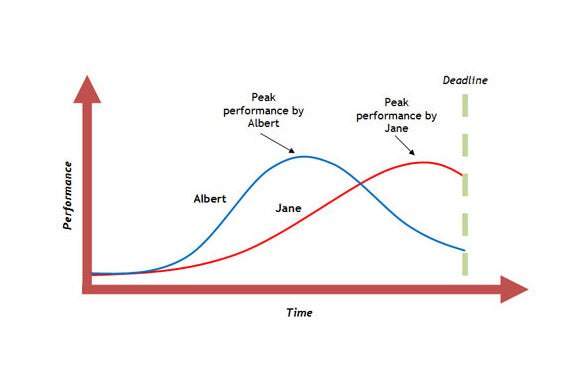A woman massages dummy ears with embedded super sensitive binaural microphones. Another presenter uses her nails on a wooden box to create a tapping sound. Someone squeezes shaving foam between her fingers and captures the sound effects. Another has discovered a jelly-like toy in some toy store and is experimenting with it to see what sounds in generates.
This is ASMR and it stands for Autonomous Sensory Meridian Response. Search for “ASMR” online and especially on YouTube and you will be given thousands of videos offering you one form or another of stress-free relaxation. Video creators are hard at work churning one video after another and the world doesn’t seem to get enough of them. Many viewers tend to watch a favourite video over and over again or ask for specific variations and expect the creators to respond. What is going on?
The answer is simple; because watching these videos or listening to them makes people “happy”, “relaxed”, “euphoric” and “destressed.” The term ASMR was coined as early as 2010 but it has become ubiquitous thanks to the internet and how sub-cultures and societies form around common needs.
The mainstream media is now picking up on the phenomenon. It is not always sound either. There are videos where presenters move their fingers in front of the camera, effectively in front of your face and this leads to a hypnotic and mesmerising effect. Why people watch such videos?
Why ASMR?
People report that these videos, make them feel a “tingly sensation that starts from the scalp and goes down the spine leading to feeling euphoric.” Other colloquial terms are “brain massage”, “head tingle” and “brain orgasm.” The ASMR sensations are different from sexual arousal and the name was carefully selected as not have any sexual connotations. In recent years though, some ASMR creators have tried to produce ASMR videos that are sexually stimulating which cater for a different market.
The whole field is extremely experimental. People generally don’t know what gives them the tingle and creators may not know what range of sounds lead to such sensations. So everyone is experimenting and the result is this great explosion of content, new creators joining in and an unusually supportive community (on YouTube) that encourages them to continue inventing, experimenting and innovating; which they do.
AMSR is ideal for anyone who feels stressed, anxious, angry, upset, revengeful or sad but you can also be happy and still enjoy the sensations. You can have the AMSR playing in the background while doing something else, like reading or writing. Alternatively, you can enjoy elegantly executed roleplays like vising a doctor, who will administer a particular exam on you. Cranial nerve examination is fairly popular so certainly give that a try. You can also see an optician or have a hairdresser giving you a virtual haircut. You can even visit a futuristic lab to delete unwanted memories!
You may wonder why AMSR works and does it have any biological roots. Most people who experience it, compare it to the sensation of tender physical touch. This has led to the conjecture that AMSR is related to the act of grooming observed in primates. Primates get a lot of pleasure from grooming each other which is a form of social bonding in addition to the effect of cleaning. ASMR is therefore a technology driven form of social bonding taking place over long distances across a variety of increasingly high-tech devices.
We are now on the verge of Virtual Reality (VR) adoption and some creators are releasing ASMR VR videos. As VR is imminent to become mainstream by the end of the year, many more devices will be available to consume such content. ASMR is really a field made for VR as the whole point is to trick your mind and sensory inputs. Virtual reality is well suited for the expression of ASMR but as with any new technology, it requires extensive experimentation. So the field is wide open for creative individuals to get in and contribute.
How to Use for Soft Skills Training
Now, within the context of training, which is what this site is all about, where does ASMR fit? If you are offering courses in soft skills, ASMR can be used for a range of topics:
- Stress management
- Motivation
- Anger management
- Anxiety management and relaxation
- Helping with sleep disorders
- Social bonding
- Meditation
- Story telling
Consider briefing your delegates about ASMR and then get them to watch some of the videos or listen to soundtracks. Videos should be watched with headphones as the quality of the sound is crucial in creating the right effect. Since the experience is individual and subjective and since different people respond differently to each stimulus, you cannot show a single video to everyone in a class and expect them to experience the sensations. Instead, you will need to offer your delegates a series of videos, chosen ahead of the training session and let them watch these videos in their own time. You can then ask them to report back on their experiences, follow with a discussion and get them to share tips.
There are tons of ASMR videos available on YouTube and elsewhere. To get you started, the following is a list of major ASMR channels run by ASMR experts who are very good at their art.
Popular and high quality ASMR channels on YouTube are:
Relaxation, Meditation, Natural Sleep Aid, Soothing Voice, Sound Therapy, Aviation Roleplay, Relaxing Physical Therapist, Typing, Suit Fitting, Hair Play, Eye-Gazing, Page Flipping, Russian Teacher
Ear to Ear Tapping, Ear Cleaning, Crinkles, Healing Sleep, Relaxation, Touch Tapping, Positivity
Elaborate Roleplays, Relaxation, Sleep Issues, Healing, Relaxing Rain Sounds, Relaxing Hair brushing
Story Telling, Acting, Theatical, Parody, Roleplay, Makeup, Intrigue
Transpersonal, Ear to Ear Sleep Induction, Massages, Haircuts, Whisper Meditations, Doctor Exam, Hypnosis, Brushing Camera, ASMR Singing, Scalp Massage
Roleplays, VR, 360 Degree Immersive ASMR, Spa Treatment, Futuristic Relaxation Program, Soft Spoken, Ear Cupping, Bed Time Fairy Tales, Makeup Artist
Guided Meditations, Original Stories, Roleplays, Sound Assortments, Blowing in Ears, Rubber Gloves, Breathy Ear to Ear Whispering, Cranial Nerve Examination
Soft Skills Training Materials
Get downloadable training materials
Online Train the Trainer Course:
Core Skills
Learn How to Become the Best Trainer in Your Field
All Tags
Training Resources for You

Course Design Strategy
Available as paperback and ebook

Free Training Resources
Download a free comprehensive training package including training guidelines, soft skills training activities, assessment forms and useful training resources that you can use to enhance your courses.

Our Comprehensive Guide to Body Language

Train the Trainer Resources
Get Insights - Read Guides and Books - Attend Courses
Training Materials
Get downloadable training materials on: Management Training, Personal Development, Interpersonal Development, Human Resources, and Sales & Marketing














Leave a comment
All comments are moderated before being published.
This site is protected by hCaptcha and the hCaptcha Privacy Policy and Terms of Service apply.